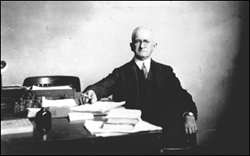 |
|
 |
|
|
|
Historical Backgrounder
The NASA Ames Research Center has emerged as NASA's leading center in supercomputing and information technology, astrobiology and the space life sciences, and nanotechnology and materials science. In addition, though they are now largely mothballed, NASA Ames hosts the world's greatest collection of wind tunnels and flight simulation facilities, a legacy of its origins in the NACA. The National Advisory Committee for Aeronautics (NACA) broke ground for its second laboratory on 20 December 1939, as the United States was preparing for World War II. The laboratory was located at a Navy airfield in Sunnyvale, California (later named Moffett Federal Airfield). Ames Aeronautical Laboratory was named as a memorial to Joseph Sweetman Ames, founding chairman of the NACA and the architect of aeronautical research in the United States. Smith DeFrance, Director from its founding to 1965, attracted to Ames some the brightest aeronautical engineers, encouraged them to build test facilities to prove their ideas, then gave them freedom to pursue useful work. For example, Lew Rodert directed an urgent program on icing research that won the Collier Trophy. R.T. Jones developed his theories of wing sweep and the transonic area rule. Harry Goett led a research effort in subsonic and supersonic aerodynamics that solved problems in jet flight in the 1950s. And H. Julian Allen proposed his concept of a blunt body shape for reentry vehicles, then devised a series of hypersonic and high-heat tunnels to create the technologies so that astronauts could return safely to Earth. When Ames became part of the new National Aeronautics and Space Administration in 1958, it continued its fundamental research in new sciences and component technologies. Building on its expertise in human factors and pilot workload research, Ames became NASA's lead center in basic life sciences research, which included radiation biology, adaptability to microgravity, and exobiology. Some Ames aerodynamicists explored the complex airflows around rotorcraft and devised the first tilt-rotor aircraft, while others modeled airflows using new supercomputers and created the field of computational fluid dynamics. To link these computers together, Ames engineers pioneered internetworking, using tools from the Silicon Valley firms growing around it. Ames engineers and planetary scientists managed a series of airborne science aircraft, of planetary atmosphere probes, and robotic explorers like the Pioneers and Lunar Prospector. Into the 1990s, Ames drew new types of university and corporate researchers into space exploration by developing the NASA Research Park at Moffett Field. And Ames leaders devised new organizational forms to create the fields of astrobiology, robotics, microelectronic mechanical systems, and nanotechnology. Glenn Bugos |
|||
 |
+ NASA Archives Program + NASA History Program + Ames Research Center History + NASA Ames Historic Preservation Office + NASA Ames Portal + NASA Freedom of Information Act (FOIA) + Accessibility at NASA + NASA Privacy Program |
NASA Ames Research Center Archives Mail Stop 207-1 Moffett Field, CA 94035-0001 Curator: Ames Research Center Archives |
||
